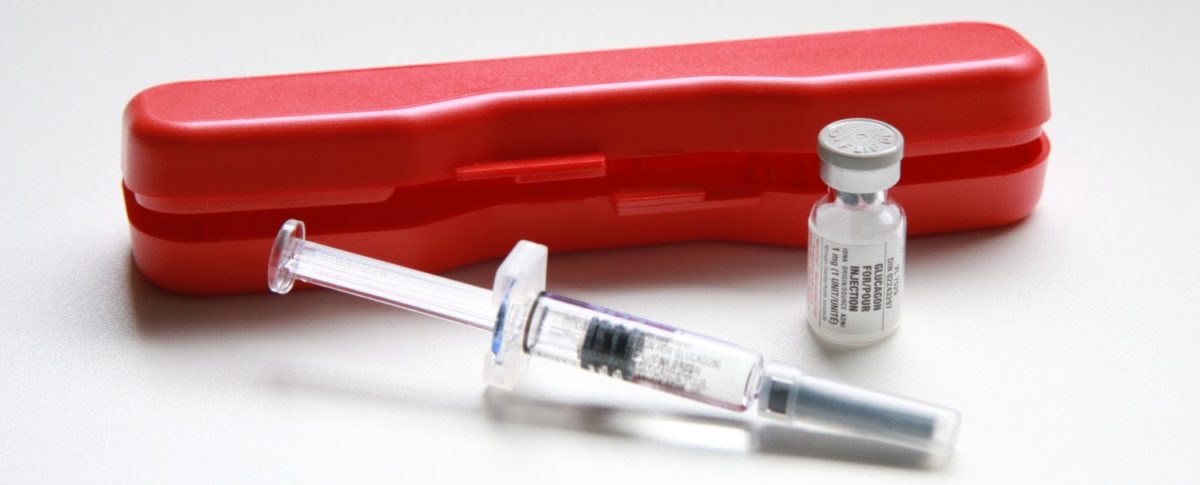Severe Lows + Glucagon
Severe Low Blood Sugar: treatment, symtpoms & when to use glucagon
Perhaps the scariest thing for a D-parent is the risk of our child having a severe low. But we can reduce our anxiety if we know why and how they occur, and what we can do to reduce the risk.
A severe low blood glucose occurs when the brain does not have enough glucose, resulting in:
- Convulsions (seizure)
- Losing consciousness
- Temporary paralysis on one side
Treatment If Still Conscious:
- Give 20gm of rapid-acting carbohydrate. For example:
- 5 Dex4® tablets
- 6 large (individual) Rockets®
- 3/4 cup of regular pop
- 2/3 cup of apple juice (least desirable choice, as it takes longer to increase blood glucose)
- You will need to firmly coax your child to eat or drink.
- If giving fluids, it is wise to avoid glass containers, in the event that your child starts to convulse and bites down on the glass.
Treatment If Unconscious or Convulsing:
- Do NOT force foods or liquids into the mouth. This may cause choking.
- Place your child on his or her side, in a safe place.
- Measure the blood glucose.
- Deliver a dose of rescue glucagon, which is available in 2 formats:
- nasal spray (Baqsimi® glucagon nasal powder, from Eli Lilly), or
- injection (Glucagon® from Eli Lilly with red case available separately, or GlucaGen® HypoKit® in an orange case from Novo Nordisk)
- For Glucagon®/GlucaGen® injection, give according to instructions in package insert.
-
-
- If your child is less than 5 years old, give 0.5 ml (0.5mg) of Glucagon®/GlucaGen®.
- If your child is 5 years or older, give 1.0 ml (1.0 mg) of Glucagon®/GlucaGen®.
-
- Call 911 if rescue glucagon is not available or your child does not wake up in 10 minutes.
- Contact your diabetes health care provider after the emergency is resolved.
Glucagon

Glucagon is a hormone that triggers the liver to release stored sugar. It takes about 10 minutes for the sugar from the liver to reach the brain and for your child to regain consciousness.
Small g "glucagon" is the name of the hormone; Capital G "Glucagon" is the brand name.
Draw up Glucagon®/GlucaGen® according to the instruction sheet in the box.
Give Glucagon®/GlucaGen® the same way that you give an insulin injection.
Once mixed, Glucagon®/GlucaGen® must be used or discarded within 24 hours.

Tips from the Trenches
If you have an expired box on hand (which will no longer be used for an actual emergency situation), it may be helpful to use it to practice mixing it and drawing it up. During an emergency it’s sometimes hard to follow instructions; having practiced previously may help.
Follow-up
- When your child is awake, give ½ cup of juice or regular pop. Wait 15 minutes and then offer a snack of starch and protein.
- The side effects of a severe low and Glucagon®/GlucaGen® are nausea, vomiting and headache.
- Monitor the blood glucose very closely following a severe low. Your child may need to come to the Emergency department until blood sugars are stable.
- Your child’s diabetes health care team may also advise you to reduce the insulin dose by 20% for two or three days after a severe low.
Preventing Severe Lows
The risk of severe low blood glucose may be reduced by:
- Supervising your child’s insulin self-injections.
- Having a safe plan for sleeping in.
- Knowing that the risk of a severe low increases with the arrival of spring. This is due to increased exercise, and possibly also due to the increased amount of daylight.
- Adjusting for exercise by decreasing insulin and/or increasing food.
- Decreasing insulin when you see a pattern of low blood glucose, or 3 or more lows per week.
- Making sure that insulin and snacks are eaten on time (as necessary, according to your child’s current Insulin Program) and that all the planned food is eaten.
- Checking the blood glucose in the middle of the night after an active day or evening, or when the blood glucose is low at bedtime.
- Checking blood glucose in the middle of the night regularly to find out if the evening long-acting insulin dose, or the basal rates for pump users, is correct.
- Making sure that your teen knows the effects of alcohol on blood glucose and “experiments” safely.
- Keeping liver stores of glycogen “topped up” by reducing the frequency of mild/moderate lows, and ensuring adequate carbohydrate intake (avoiding low-carb or extreme diets). There is anecdotal support for the suggestion that the combination of protein, fat and sugar in chocolate milk may be an effective way of refilling the “glycogen bank” following intense or prolonged exercise.
- Doing random blood glucose “spot checks” at non-routine times (including during the night, and less than 2 hours after meals) to see if your child is experiencing undetected lows.
More on adjusting for exercise by decreasing insulin and/or increasing food:
More on decreasing insulin when you see a pattern of lows:
References:
The above information was adapted with permission from The Alberta Children’s Hospital Diabetes Clinic information handouts.
The above information was reviewed for content accuracy by clinical staff of the Alberta Children’s Hospital Diabetes Clinic.
SHARE THIS ARTICLE